Peter Mabeo is no stranger to high-profile international collaborations. The Botswana-born and based furniture designer, who is famous for highlighting the human element of his pieces by capturing them alongside the craftspeople that created them, released his first international collaboration with Patty Johnson in 2006. Since then, he has gone on to make pieces for Hong Kong’s Mercedes Benz dining room, New York’s Andaz 5th Avenue Hotel amongst others. He also released collections with other foreign designers such as Claesson Koivisto Rune and Inès Bressand.
Now, he has teamed up with luxury house Fendi for a ten-piece collection exploring local craft and pushing traditional techniques and materials into new directions.
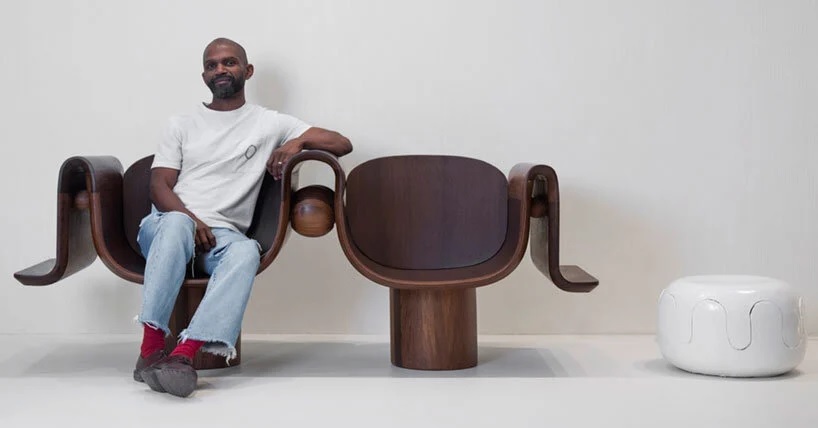
The idea for a collaboration with Peter Mabeo was born after his work with Inès Bressand caught the attention of Kim Jones, artistic director of couture and womenswear for Fendi. The latter curated the project alongside Silvia Venturini Fendi, the brand’s creative director of accessories, menswear and children, and Delfina Delettrez Fendi, artistic director of jewellery.
“I was very taken by Mabeo’s 2017 collaboration with Inès Bressand, which featured the use of panga panga wood and distinctive hand-beaten metal panels on the ‘Zezuru’ cabinet and chair. I was immediately drawn to the considered approach Peter’s studio had to form and function, combined with materials and artisanal techniques specific to their local environment,” says Jones.
For him, the connection to the project was also personal, as he spent a significant amount of time in Botswana as a child, when his father, a hydrogeologist, was working in the region.
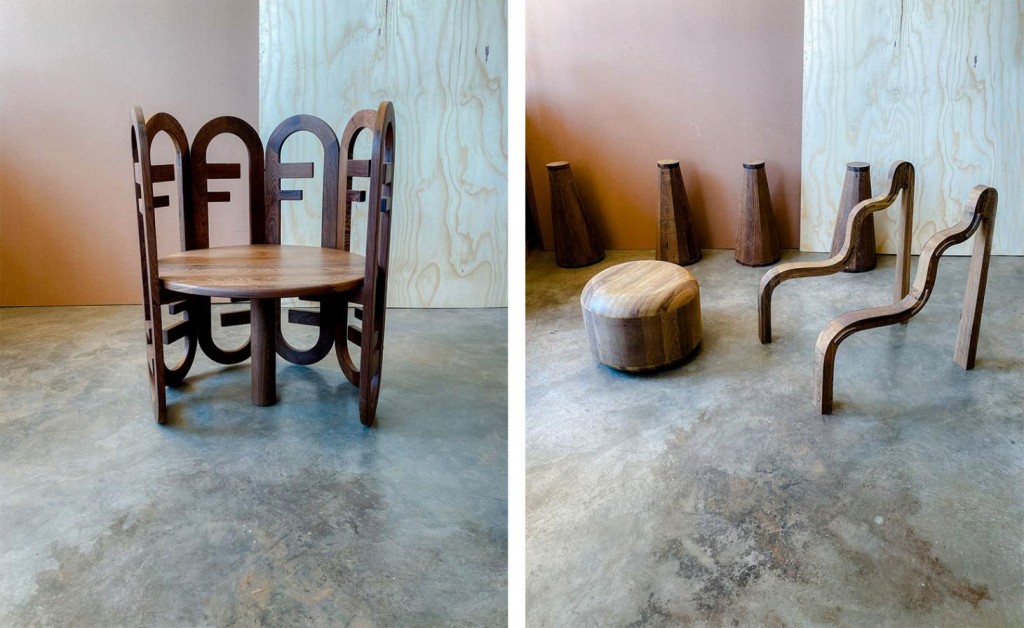
Another element that attracted Jones was Mabeo’s workshop set-up and his creative approach. Having moved away from the centre of Gaborone a few years ago, the studio is now located within a former general dealer, and when the season allows, the team works outdoors, in the yard – which is also the backdrop to much of their product photography. “The manner in which they have documented their collections stood out, photographing the works primarily outside and being used or handled in some way, capturing their everyday usefulness in a very pure and engaging way,” adds Jones.
The brief Jones and Delettrez Fendi gave Mabeo for the project was very free: “I felt like they really wanted me to express something,” he recalls. He also witnessed the brand’s approach to craft during a visit to the Fendi Rome HQ earlier this year. It inspired him to ‘go crazy’ with the artisanal techniques he employed throughout the project. “It’s so incredibly significant for me to have an opportunity to question and to experiment, to try and do things that are outside of typical ways of thinking,” explains Mabeo.
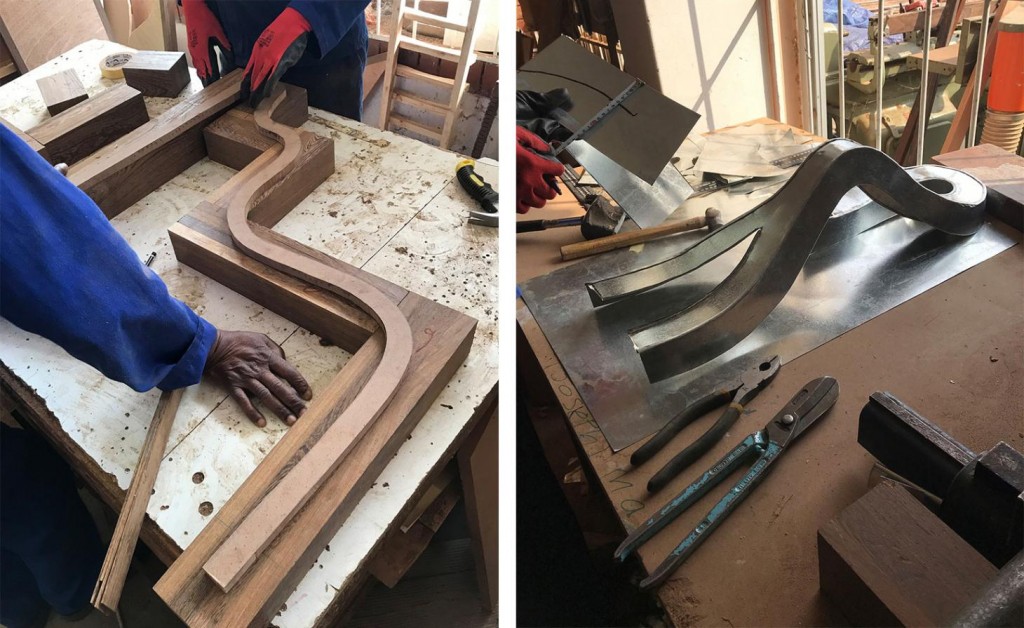
Launching at Design Miami, the collection includes the Gabi-Gabi sculpture, a large-scale centrepiece made of galvanised metal sheet, and recreated in a smaller version in the Gabinyana brass table lamp. There is also the Shiya seat, made of panga panga wood and plywood.
Reaching into different experimental territories is the Foro chair, which moves away from the idea of a clay object being a monolith and instead uses the material to create an archetypal seat (an additional version is made of panga panga wood). For this piece, Mabeo wanted to use clay as a freehand material, so he asked wood and metal artisans to build a shape that could then assist the hand-moulding of clay into the chair’s forms. The clay was fired using an old method, in which cow dung is used as fuel for the kiln.
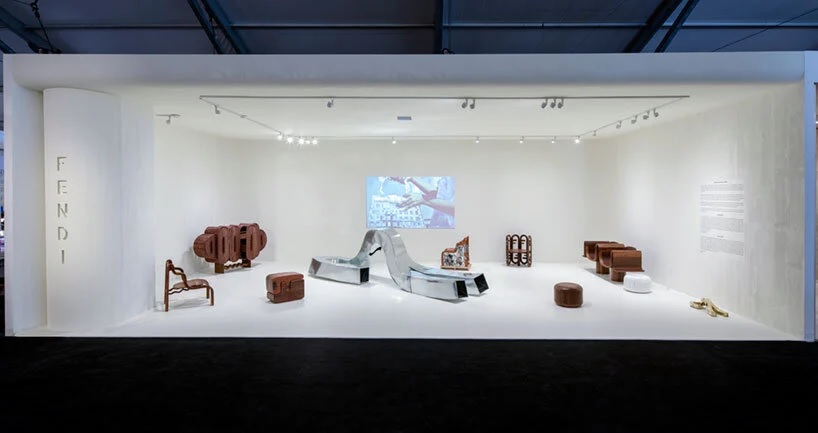
Subtle nods to the fashion house can be found throughout the collection, such as in the mirrored F-shaped Efo stools in wood and clay, or in the Maduo chair, referencing a piece of jewellery designed by Delettrez Fendi and transformed by Mabeo into a wooden chair using precise joinery.
The Chichira cabinet combines woven palm leaves with a structure made of wood and metal. Here, Mabeo worked with weavers from Etsha, in north-western Botswana, who specialise in freeform woven vessels. “We wanted to see if it was possible to contain the weaver’s freedom: generally they weave in a circular shape, a sphere that’s never quite precise,” says Mabeo. The idea for this piece, he explains, was to create an association between a technique that’s fairly rigid and something more fluid. Mabeo also considered the functionality of his pieces, case in point being the Loma stool, which doubles as a storage container or side table and can be used combined into one piece, or split into two. Like other objects in the collection, it is made in both wood and clay versions.
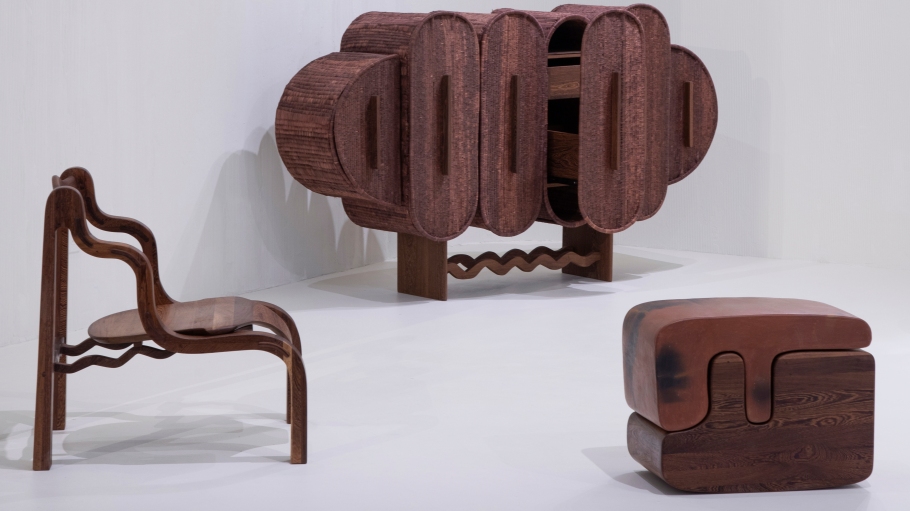
Looking at the pieces in this collaboration is like exploring a map of craft in Botswana, as Mabeo called upon an extended network of artisans to bring each design to life. “We’ve travelled all over the country, we’ve engaged basket weavers, metal workers, people practising ancient techniques, as well as our local wood and metal artisans.” Human connections were key to bringing the pieces together: “I didn’t want to just employ the materials for the sake of it, but to create an opportunity to engage with the craftspeople who are still custodians of these techniques, going back so long.”
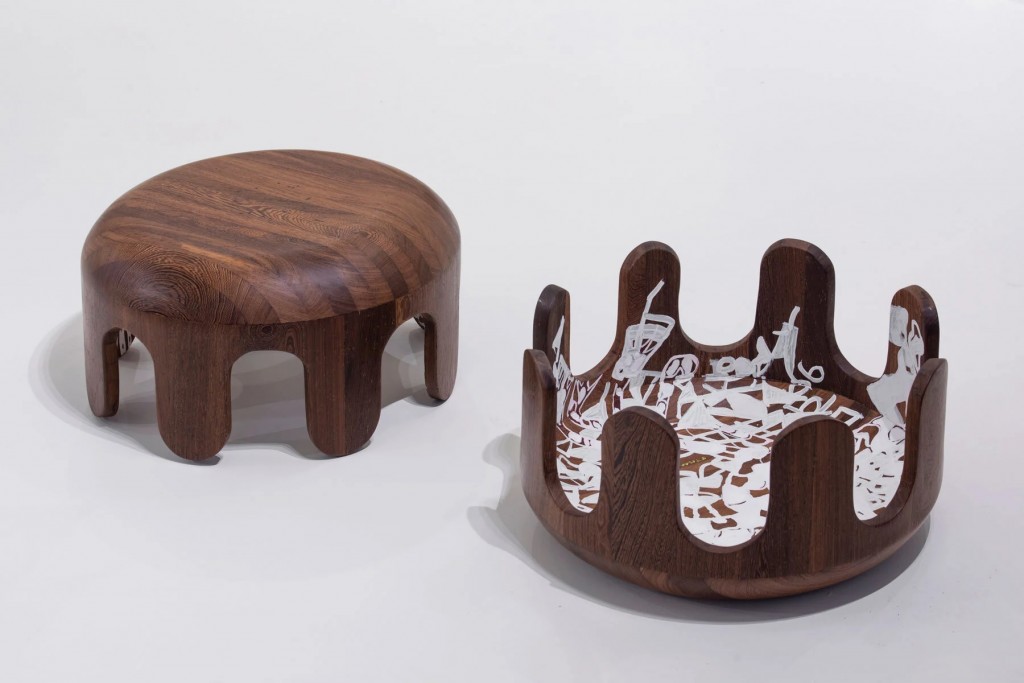
He admits that the reaction of some of the craftspeople he involved in the project was along the lines of ‘no, this is crazy’. But as the pieces developed, he witnessed an interest in doing something new, room for making things interesting. “It was really just about trying to take things that don’t necessarily belong together and removing divisions. ‘I like the idea of working freely, outside the confines of formality.”
Source: Wallpaper
